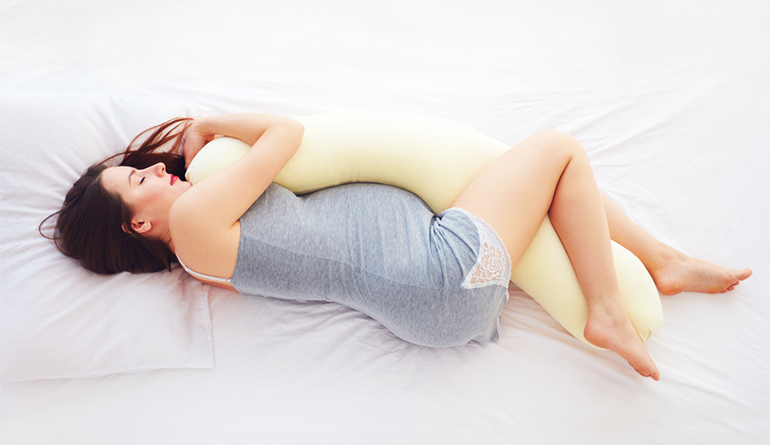Pregnancy can be an exciting experience—and an exhausting one!
Many mothers-to-be are sleep-deprived, unable to find the perfect position for falling—or staying—asleep.
Luckily, a growing bump doesn’t have to result in months of sleepless nights. Pillow Picker has compiled advice from online pregnancy experts to ensure all future moms get the rest they deserve and so desperately need.
Your Changing Body
Aside from the obvious (hello, protruding belly!), your body will change in many ways as you prepare to give birth. Back pain, cramping, heartburn, shortness of breath, and insomnia are common during pregnancy. In addition, hormone changes result in the bladder filling more often; this means increasingly frequent trips to the bathroom.
While many of these changes are normal and have to run their course, your sleep position can make a big difference. In fact, some positions can actually lead to unnecessary discomfort.
The Best Sleep Position for Mom and Baby
As your baby (and bump) continues to grow, intuition is likely to kick in. If you are a stomach sleeper, you’ll need to find a new sleeping style; your tummy will insist on it.
According to americanpregnancy.org, sleeping on the side (SOS) is best. Due to the baby’s positioning in your belly, snoozing on your left side is ideal; this position allows blood and nutrients to make their way to the placenta and your growing bundle of joy. It also ensures your body weight won’t put added stress on your liver.
The Importance of Pillows
As you near the final months of your pregnancy, pillows will become your best friend. The following tips will help you position them correctly depending on your sleep concern.
An Aching Back: If you’re struggling to snooze due to back pain, webmd.com suggests placing a pillow below your belly and between your knees. See my article on the best pregnancy pillows for ratings and descriptions of five excellent (and comfy) pregnancy pillow options. Positioning a pillow below your belly won’t only relieve back pain; it will also keep you from rolling onto your back or belly.
Breathe Easy: If shortness of breath becomes a problem, consider propping your chest up by placing a pillow under your side.
No More Heartburn: The heartburn that many pregnant women experience often grows worse at night. If you experience this discomfort, use pillows to prop your upper body. Webmd.com also suggests raising the head of your bed with blocks or books – but you can also try a wedge pillow!
Sleep Positions to Avoid
When you’re beyond tired, comfort is key at bedtime. It’s important, however, to avoid sleeping on your stomach or on your back. Here’s why:
Back Sleeping: According to americanpregnancy.org, back sleeping during pregnancy can cause a variety of issues, due to the stomach resting on major blood vessels and the intestines. Back sleepers may experience backaches, breathing and/or digestive problems, decreased circulation to the heart and baby, and low blood pressure. Sleeping on your side is likely to lessen these symptoms.
Stomach Sleeping: As your pregnancy progresses, it will become increasingly difficult—and eventually impossible—to sleep on your stomach due to its growing size. Further discomfort comes from your belly pushing into your uterus, making stomach sleeping less appealing in the later stages of pregnancy.
Rest is Best: It’s natural to change sleep positions throughout the night for comfort, so don’t be alarmed if you wake up on your back or stomach. Lack of sleep can be detrimental to emotional and physical health; be gentle with yourself when it comes to your body’s preferred position. Simply roll onto your side when you wake up, and keep in mind that your side sleeping status is only temporary.

